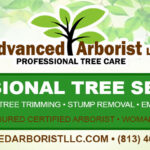When it comes to tree removal, most homeowners breathe a sigh of relief once the towering giants are gone. However, a crucial aspect often goes unnoticed: the tree stump left behind.
Beyond being a mere aesthetic concern, the presence of a tree stump can pose various risks and challenges. In this comprehensive guide, we delve into the often-overlooked importance of removing a tree stump after tree removal and uncover the potential hazards it can bring. Join us as we explore the reasons, methods, and benefits of bidding farewell to those stubborn remnants of arboreal glory.
1. The Hidden Perils of Tree Stumps: Tree stumps may seem harmless, but they harbor a multitude of risks that can impact your property and surroundings. From attracting pests to causing tripping hazards, we unveil the hidden perils that demand prompt attention. Termites, beetles, and other wood-boring insects find a haven in decaying stumps, potentially spreading to other healthy trees and wooden structures. Moreover, these stumps can become breeding grounds for fungi and diseases that may infect nearby vegetation.
2. Tripping Hazards and Aesthetic Dilemmas: While a tree stump might blend into the landscape, it presents an undeniable tripping hazard, especially in high-traffic areas. Imagine the potential for accidents, particularly in the twilight hours or during inclement weather. Beyond safety concerns, the aesthetic aspect cannot be disregarded. A well-maintained yard can be marred by the presence of an unsightly tree stump, potentially affecting your property’s curb appeal and overall value.
3. Ecological Impact and Space Utilization: The ecological footprint of a leftover tree stump can extend beyond your property lines. As it decomposes, it consumes valuable nutrients that could otherwise support new plant life. Moreover, the space occupied by a stump could be repurposed for a new tree, shrubs, or other landscaping features. By removing the stump, you not only prevent resource depletion but also contribute positively to the environment and enhance the functionality of your outdoor space.
4. Tree Stump Removal Methods: There are several methods to consider when it comes to removing a tree stump. From chemical solutions to mechanical grinding, we delve into the pros and cons of each approach. Chemical options gradually accelerate decomposition, while mechanical methods offer a quicker resolution. Weighing these methods against factors like cost, time, and environmental impact can guide your decision-making process.
5. Professional vs. DIY Stump Removal: As with any undertaking, the decision between professional assistance and a do-it-yourself approach depends on various factors. While DIY methods may seem cost-effective, they often lack the precision and expertise of professionals. Discover the advantages of enlisting skilled arborists or stump removal services to ensure a safe and efficient removal process.
6. Reaping the Benefits: Bid farewell to the last remnants of your felled tree and embrace a multitude of benefits. Increased safety, enhanced aesthetics, and environmental stewardship are just the beginning. Reclaim your yard space, prevent potential infestations, and foster healthier landscaping with the removal of that lingering stump.
Tree removal is only half the battle; the often-forgotten stump removal completes the task. From the hazards it conceals to the opportunities it obstructs, a tree stump demands attention. By understanding its importance and the risks it poses, you can make an informed decision to prioritize its removal. Remember, a landscape free from tree stumps is not just a visual upgrade, but a safer, more vibrant, and ecologically responsible choice.
For exceptional tree services tailored to your needs , contact us. Our team of certified arborists is committed to delivering top-notch tree care solutions.




